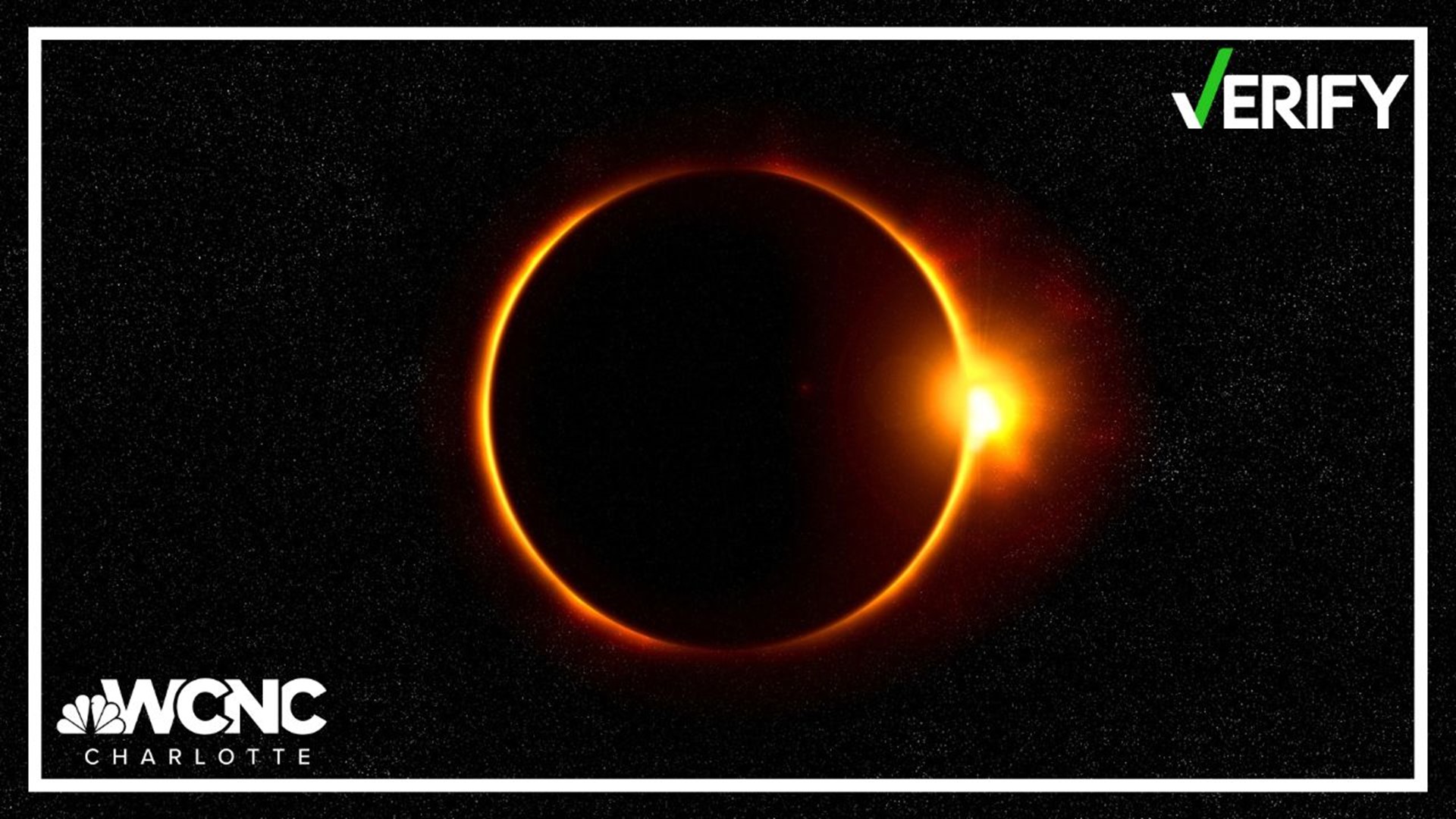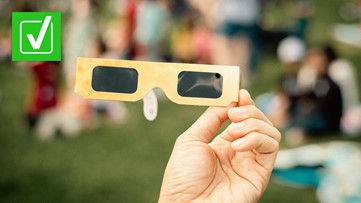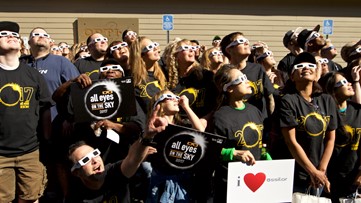CHARLOTTE, N.C. — Millions of people will look toward the sky on April 8 for the total solar eclipse that's being called the "great American eclipse."
A four-minute period of complete darkness will occur along the path of totality from Texas to Ohio and into New England. An estimated 31.6 million people live in the path of totality this year, according to NASA. That compares to 12 million people in 2017, when the path of totality came directly through the Carolinas.
Since the dawn of time, many myths and legends have sprung up around solar eclipses.
OUR SOURCES
MYTH
Total solar eclipses produce harmful rays that can cause blindness.
FALSE: While the eclipse itself can't cause blindness if you are not in the path of totality and not wearing glasses, it can cause serious damage to your eyes.
NASA said light from the eclipse at totality is a million times more faint than the light from the sun itself.
According to NASA, there is nothing in the coronal light that could cross a million miles of space, penetrate our dense atmosphere, and cause blindness.
However, if you try to gaze at the sun before totality, you will be looking at the solar surface and that could cause retinal damage.
"The important thing is that you actually use the glasses," Kman said. "Damage can happen to the front of the eye, which is the cornea. That can be very painful and cause somebody to come to the emergency department or it could cause damage to the retina, which is the back of the eye."
MYTH
If you are pregnant, you should not watch an eclipse because it could harm your baby.
NASA said this is false.
This myth stems from the idea that harmful radiation is emitted during a solar eclipse. While NASA does say particles called neutrinos do travel from the sun to Earth and through your body, it's not enough to harm you.
MYTH
There are no total solar eclipses at Earth's north or south poles.
According to NASA, this is false. The last total solar eclipse viewed from the north pole was on March 20, 2015, and it was directly in line with the north pole.
The last total eclipse viewed from the south pole was on Nov. 23, 2003.
Contact Meghan Bragg at mbragg@wcnc.com and follow her on Facebook, X and Instagram.
WCNC Charlotte's Verify series is all about trying to make a difference in the Carolinas by making sure the community has the correct information. WCNC Charlotte outlines concisely what we know and what we don't know. Sometimes the answer can be surprising. Watch previous stories where we verify social media claims in the YouTube playlist below and subscribe to get updated when new videos are uploaded.












